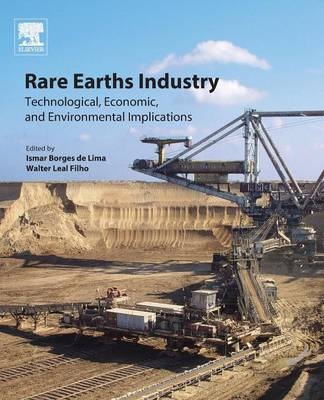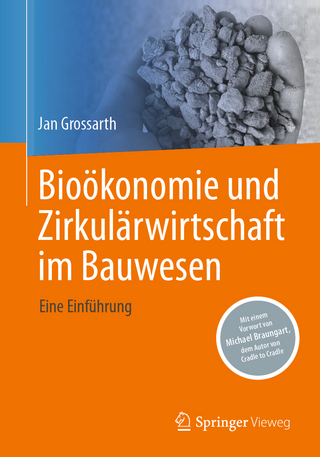
Rare Earths Industry
Elsevier Science Publishing Co Inc (Verlag)
978-0-12-802328-0 (ISBN)
Rare Earths Industry: Technological, Economic and Environmental Implications provides an interdisciplinary orientation to the topic of Rare Earths with a focus on technical, scientific, academic, economic, and environmental issues. Part I of book deals with the Rare Earths Reserves and Mining, Part II focuses on Rare Earths Processes and High-Tech Product Development, and Part III deals with Rare Earths Recycling Opportunities and Challenges. The chapters provide updated information and priceless analysis of the theme, and they seek to present the latest techniques, approaches, processes and technologies that can reduce the costs of compliance with environmental concerns in a way it is possible to anticipate and mitigate emerging problems.
Foreword/Preface
Introduction
Global Highlights on Rare Earths
Rare Earths Exploration: The Worldwide Geopolitical Context and Importance
PART I: RARE EARTHS MINING ISSUES
1) Promising geological environments and target areas for rare earth deposits
2) Rare Earths Reserves
3) Extracting Rare Earths of Ores
4) Rare Earth Geochemistry and Ore Dressing
5) Rare Earth Chemistry and hydrometallurgy
6) Rare Earth Magnetic Materials and Magnetism
7) Rare Earth New Materials
8) Rare Earth Catalytic Materials
9) Rare Earth Analytical Chemistry
10) Technological innovations in Sustainable Mining of Rare Earths
11) Wrapping up the Section I
12) The Technological, Economic and Environmental Implications of Rare Earths Mining
PART II: RARE EARTHS PROCESSES & HIGH-TECH PRODUCT DEVELOPMENT
13) Rare Earths in Agriculture
14) Metallurgical applications of rare earths: Application of Rare Earths in Iron and Steel; Application of Rare Earth in Casting; Application of Rare Earth in Ceramic and Glass
15) Rare Earths in Magnets & Trends
16) Technologies that require these materials: solar and wind energy systems, hybrid and electric vehicles, high-efficiency lighting, military and aerospace technologies, and most recently, high-efficiency electric motors, smart phones, etc.
17) The Technological, Economic and Environmental Implications of Rare Earths Product Development
PART III: RARE EARTHS RECYCLING OPPORTUNITIES AND CHALLENGES
18) Current Rare Earths Recycling Technologies
19) Rare Earths in Magnets & Recycling
20) Green Technology & Rare Earths Recycling
21) Extracting Rare Earth Materials from Nickel-Metal Hydride Batteries
22) Rare Earths recycled from: smart phones, TVs, light bulbs, glass, hybrid and electric vehicle batteries, steel and aluminum wind turbines, etc.
23) Wrapping up the Section III: The Technological, Economic and Environmental Implications of Rare Earths Recycling
24) Conclusion
| Sprache | englisch |
|---|---|
| Maße | 191 x 235 mm |
| Gewicht | 970 g |
| Themenwelt | Naturwissenschaften ► Biologie ► Ökologie / Naturschutz |
| Wirtschaft ► Volkswirtschaftslehre ► Makroökonomie | |
| ISBN-10 | 0-12-802328-7 / 0128023287 |
| ISBN-13 | 978-0-12-802328-0 / 9780128023280 |
| Zustand | Neuware |
| Haben Sie eine Frage zum Produkt? |
aus dem Bereich


